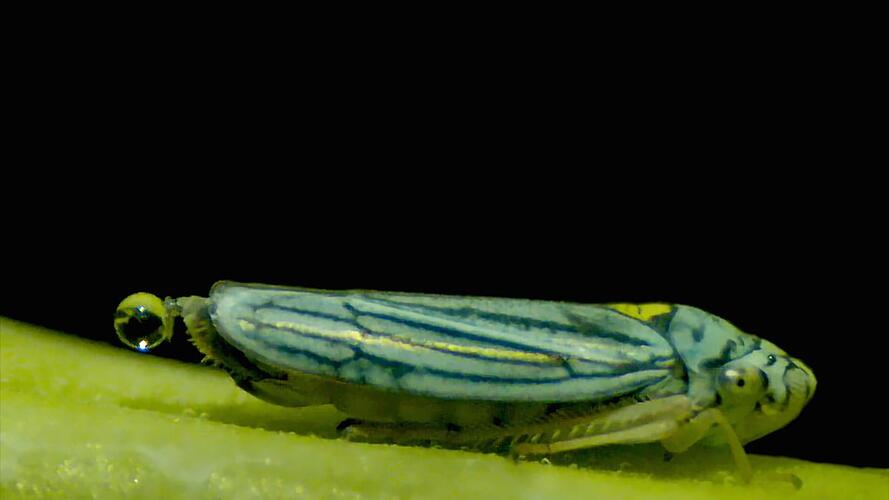The first example of ‘superpropulsion’ in nature
According to a new study, relatives of cicadas called sharpshooter insects can catapult urine droplets at extremely high speeds, providing the first documented instance of “superpropulsion” in nature.
In addition to enabling bugs to conserve energy while urinating, this newly discovered effect could also improve self-cleaning technology and soft robotic engines, according to researchers.
Researchers looked at relatives of cicadas called glassy-winged sharpshooters for the latest study (Homalodisca vitripennis). The xylem, a woody portion of a plant that transports water and dissolved nutrients up from the roots as opposed to the phloem, which transports sugar down from the leaves, is where these insects, which are about half an inch (1.2 centimeters) long, feed on sap.
95% of the sharpshooter’s diet consists of water, which is nutrient-poor. As a result, the bugs must continuously consume xylem sap to survive, and they can excrete up to 300 times their body weight each day. Humans, by contrast, urinate around one-fourth of their body weight each day.
Although the mechanics of feeding are known, there is still much to learn about the physics of defecation, according to the experts. They concentrated on sharpshooters to examine if their small bodies had developed any ingenious strategies to deal with the incessant “leafhopper rain” urination.
“I saw these insects peeing once and fell in love”, study senior author Saad Bhamla, An Atlanta-based biophysicist from the Georgia Institute of Technology explained.
The anal stylus, or “butt flicker”, as Bhamla termed it, is a structure at the end of the sharpshooter that was examined by scientists using high-speed videos and microscopy. The stylus flexes downward to make room when the bug squeezes out a droplet of urine when it is time to pee. As the drop reaches the ideal size, the stylus bends even farther downward before launching the droplet with an acceleration of more than 40 Gs.
According to the researchers, the stylus can move up to 0.75 feet per second (0.23 meters per second). Yet, the propelled droplets travel at a rate of up to 1.05 feet per second (0.32 m/s), which is nearly 40% quicker.
The finding confirms the existence of the superpropulsion phenomenon, which was previously only observed in artificial environments. By matching its motions with those of its launchpad, similar to a diver timing their jump off a springboard, an elastic projectile using superpropulsion moves faster than its launchpad.
The researchers discovered that the droplets were squeezed by the stylus, storing energy in their surface tension immediately prior to launch to assist in catapulting them at high speeds. Because of how strongly the molecules in liquids cling to one another, surface tension, which causes liquid surfaces to behave like flexible membranes, is what causes drops of liquid to bead up.
“Oftentimes we overlook excretion because it’s taboo or silly, but it’s a critical biological function akin to feeding that has important energetic, ecological and evolutionary implications”, study first author Elio Challita, a biophysicist at the Georgia Institute of Technology explained. “What started as a curious observation of an unusual peeing mechanism uncovered the first example of superpropulsion in a biological organism”.
The researchers used micro-CT scans to examine the architecture of the bugs and take measurements from inside the insects to understand why sharpshooters hurled pee droplets rather than spraying urine in jets. The scientists were able to use this information to estimate the pressure and energy required for the insects to urinate, which showed that superpropulsion required four to eight times less energy than jets.
These discoveries could aid engineers in creating machines that need less energy to clean themselves. “Water droplets often stick to surfaces due to surface tension, which can be undesirable in several contexts, such as cleaning and preventing damage to electronics”, Challita said. “Superpropulsion of droplets offers a way to eject droplets from surfaces by vibrating the surface to the vibrational frequency of the droplets”.
Also, according to Challita, the findings might assist increase the effectiveness of the engines that drive soft, flexible robots. In conclusion, “we can discover some amazing things in our own backyards, we just have to look closely”, Bhamla added.

